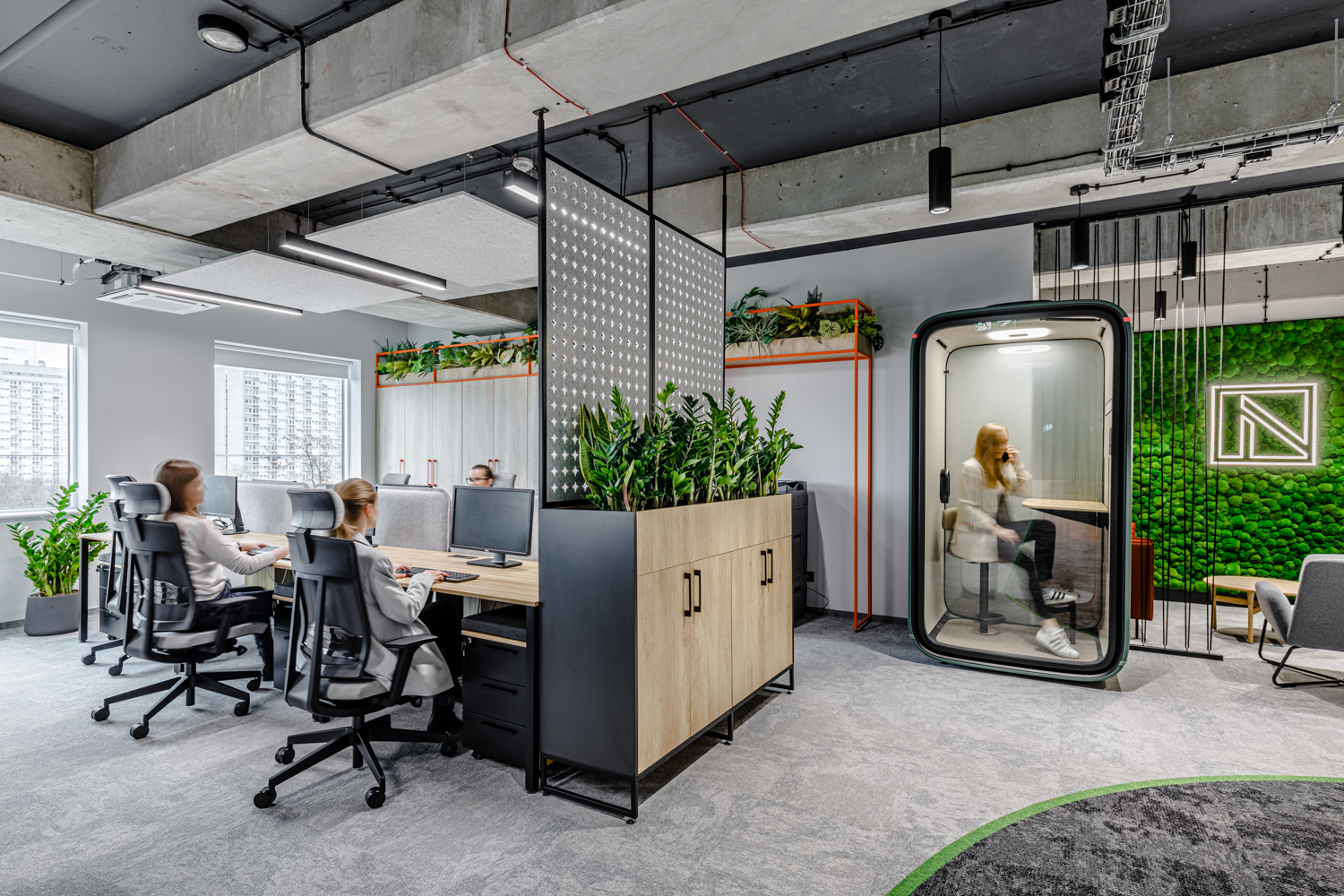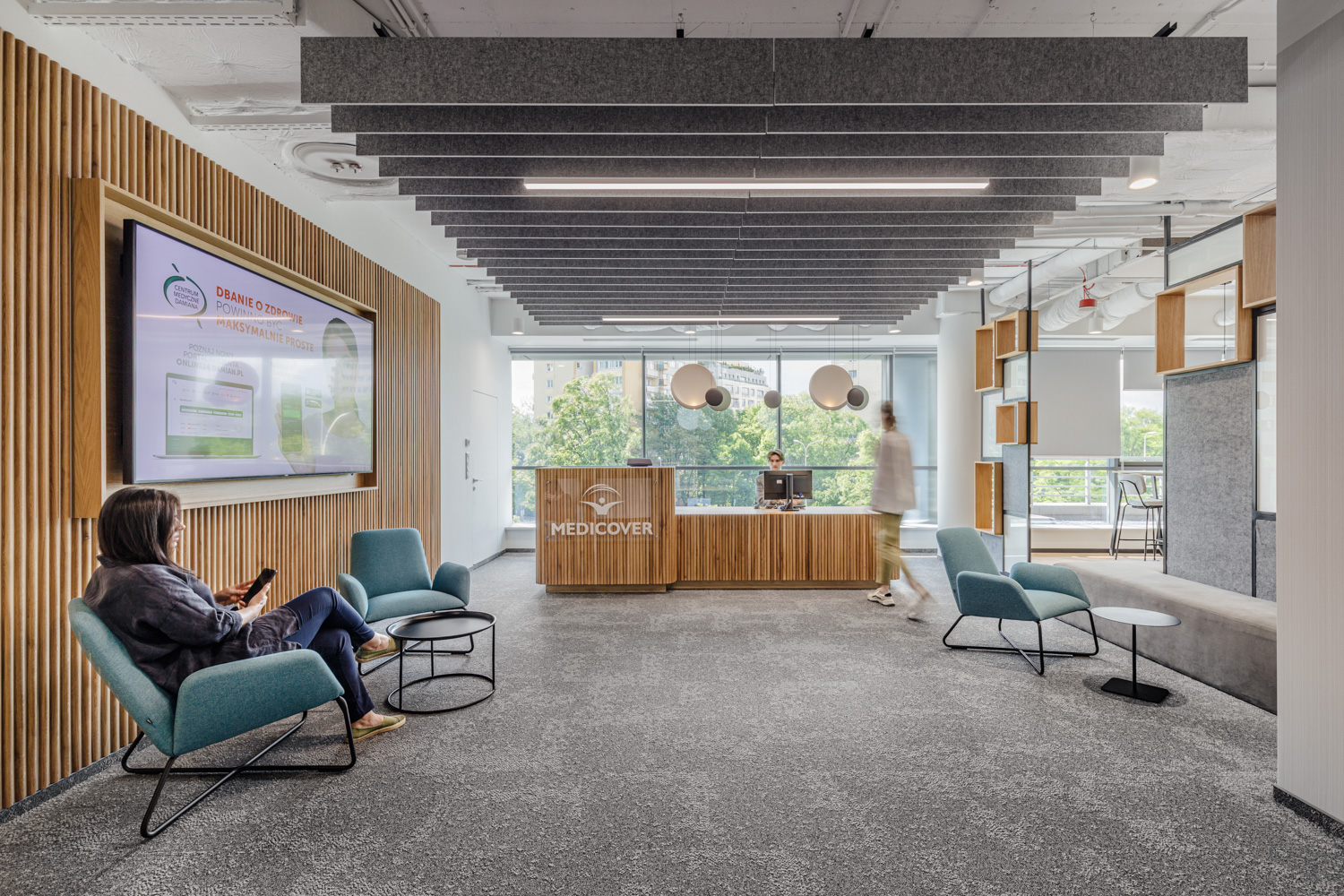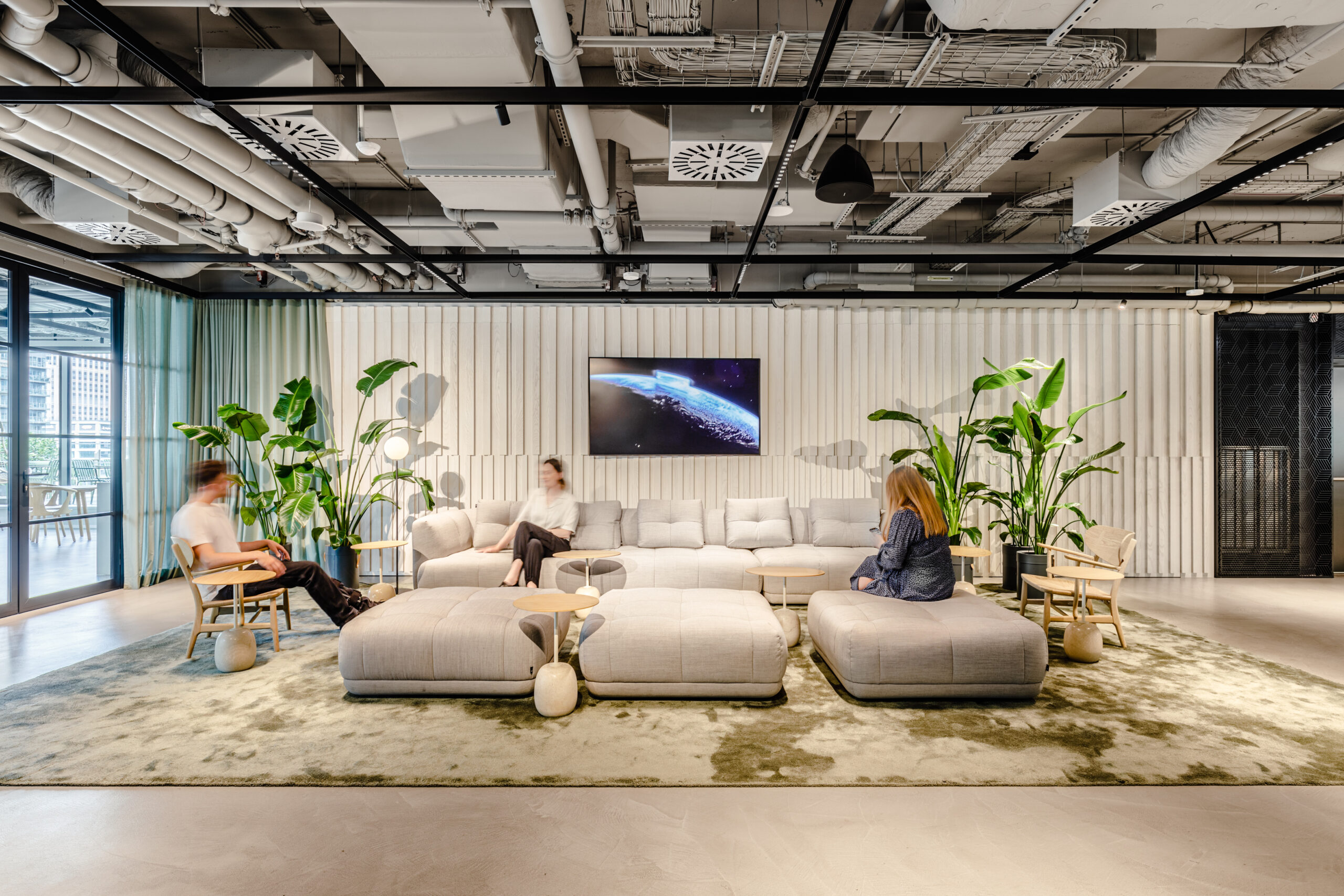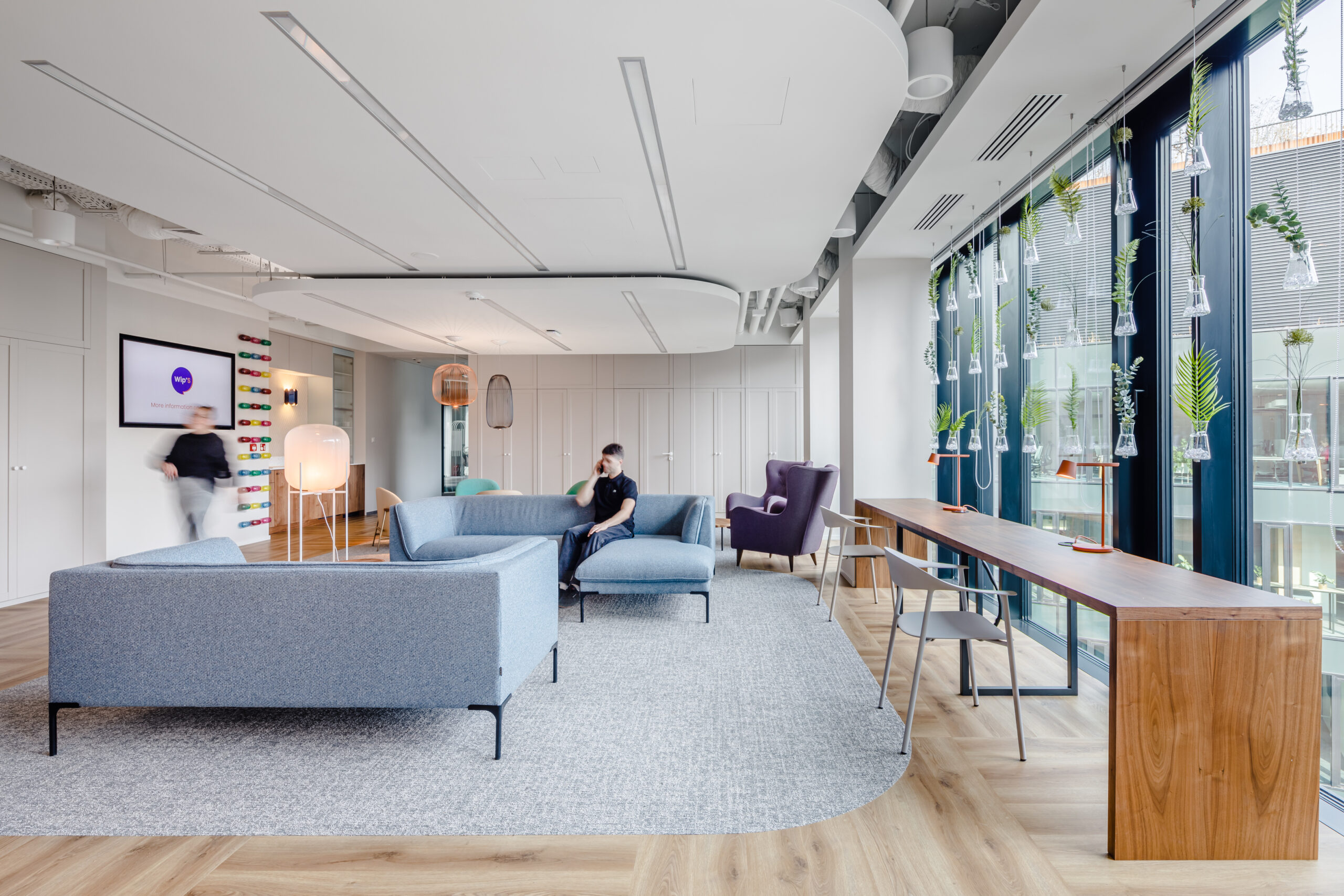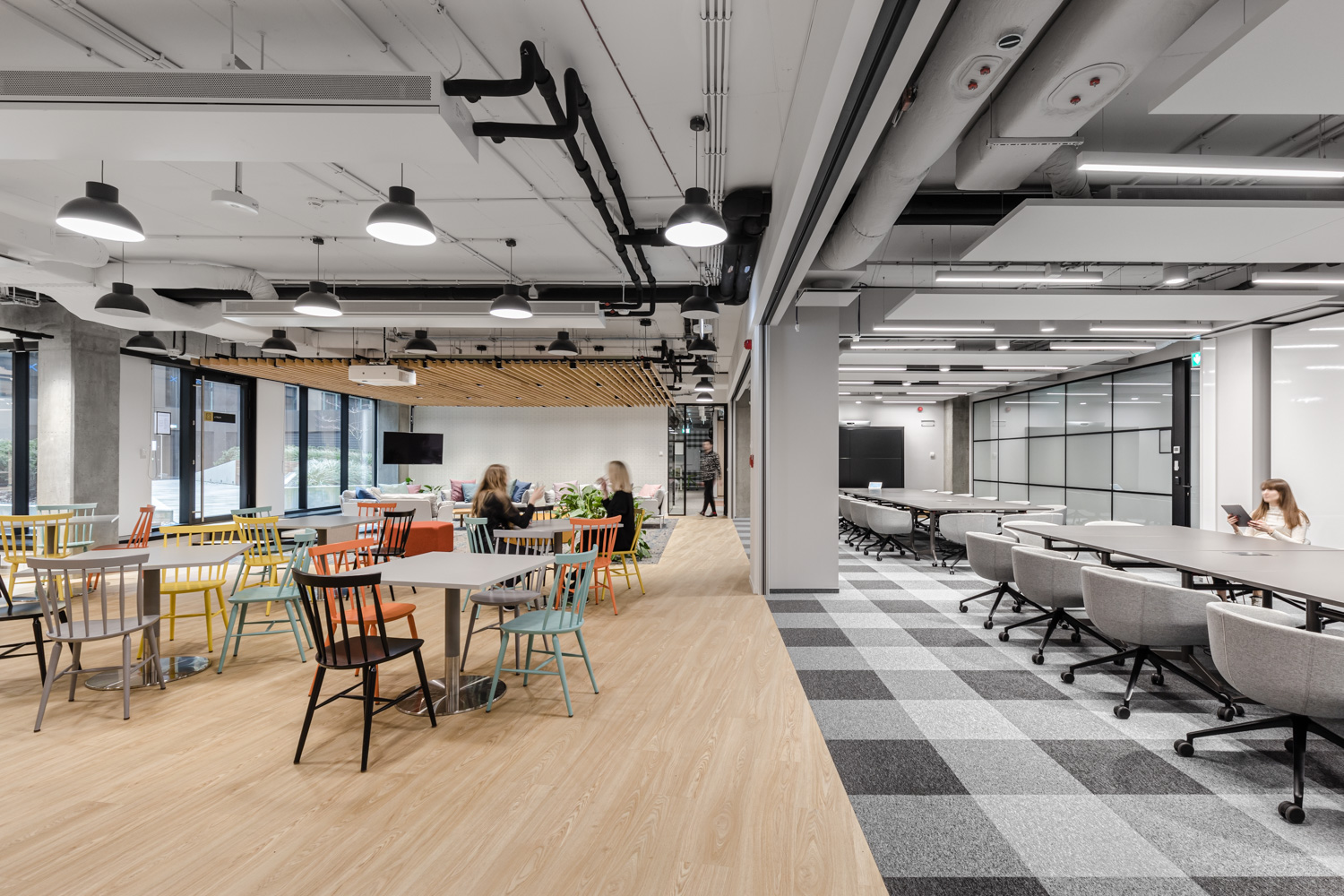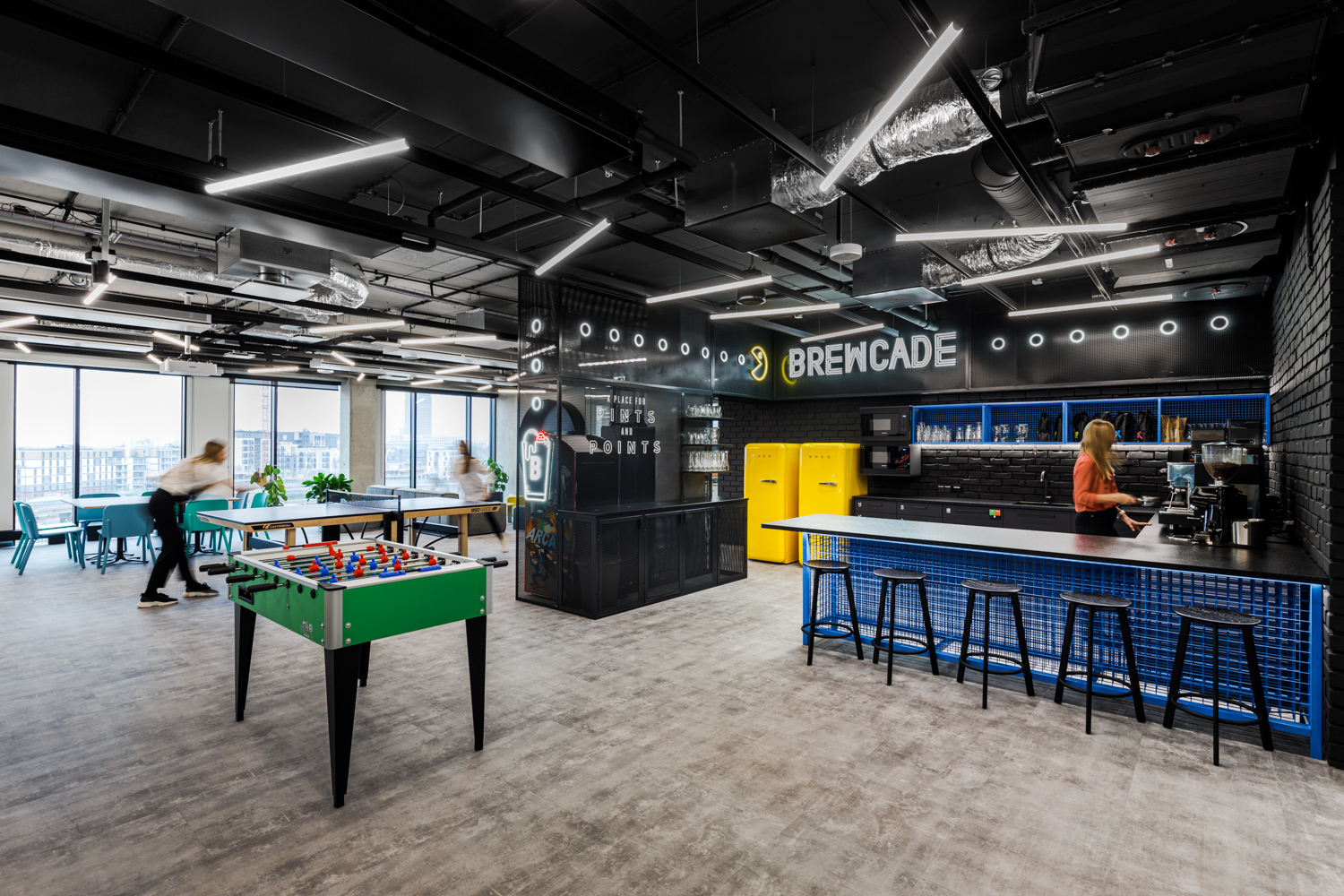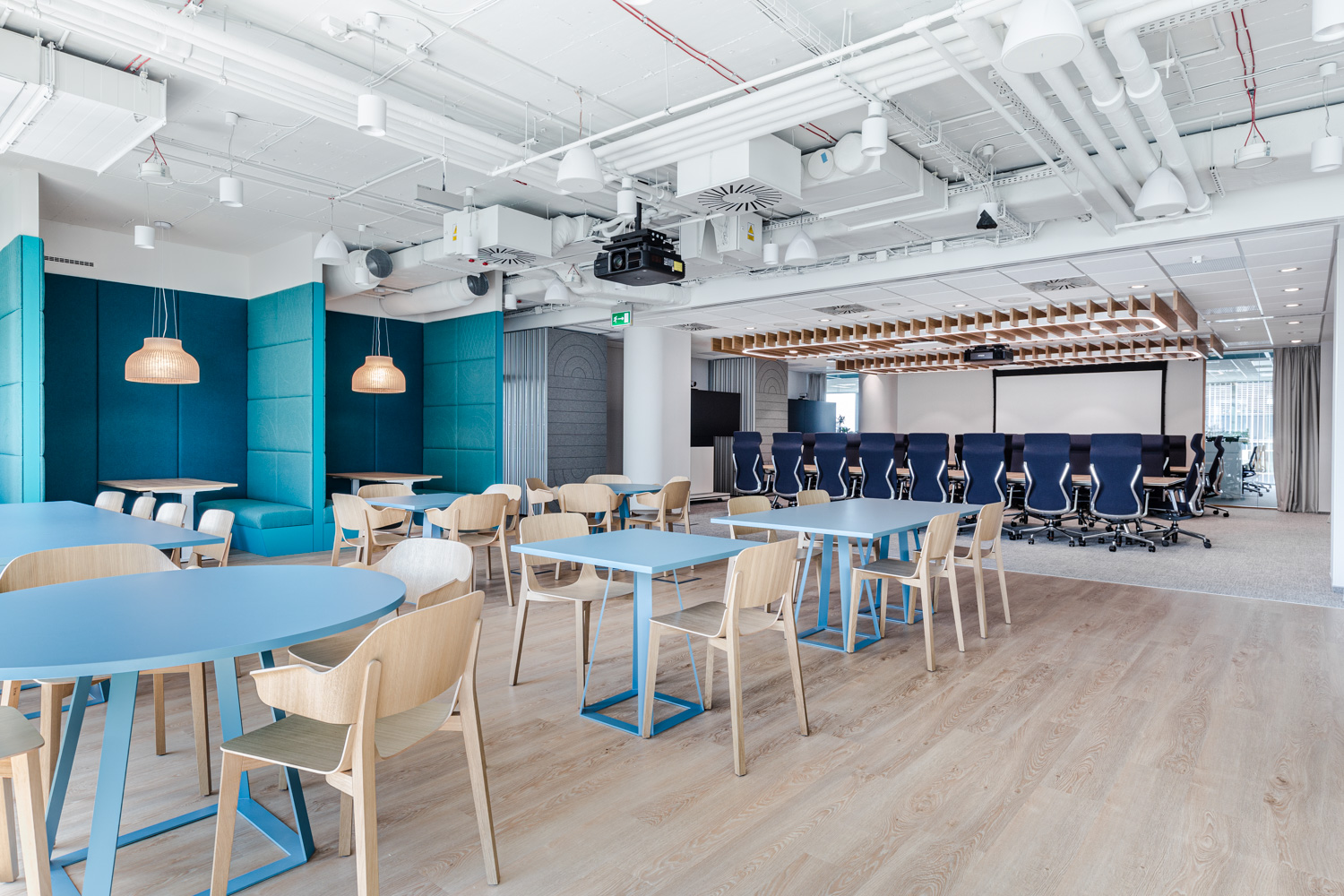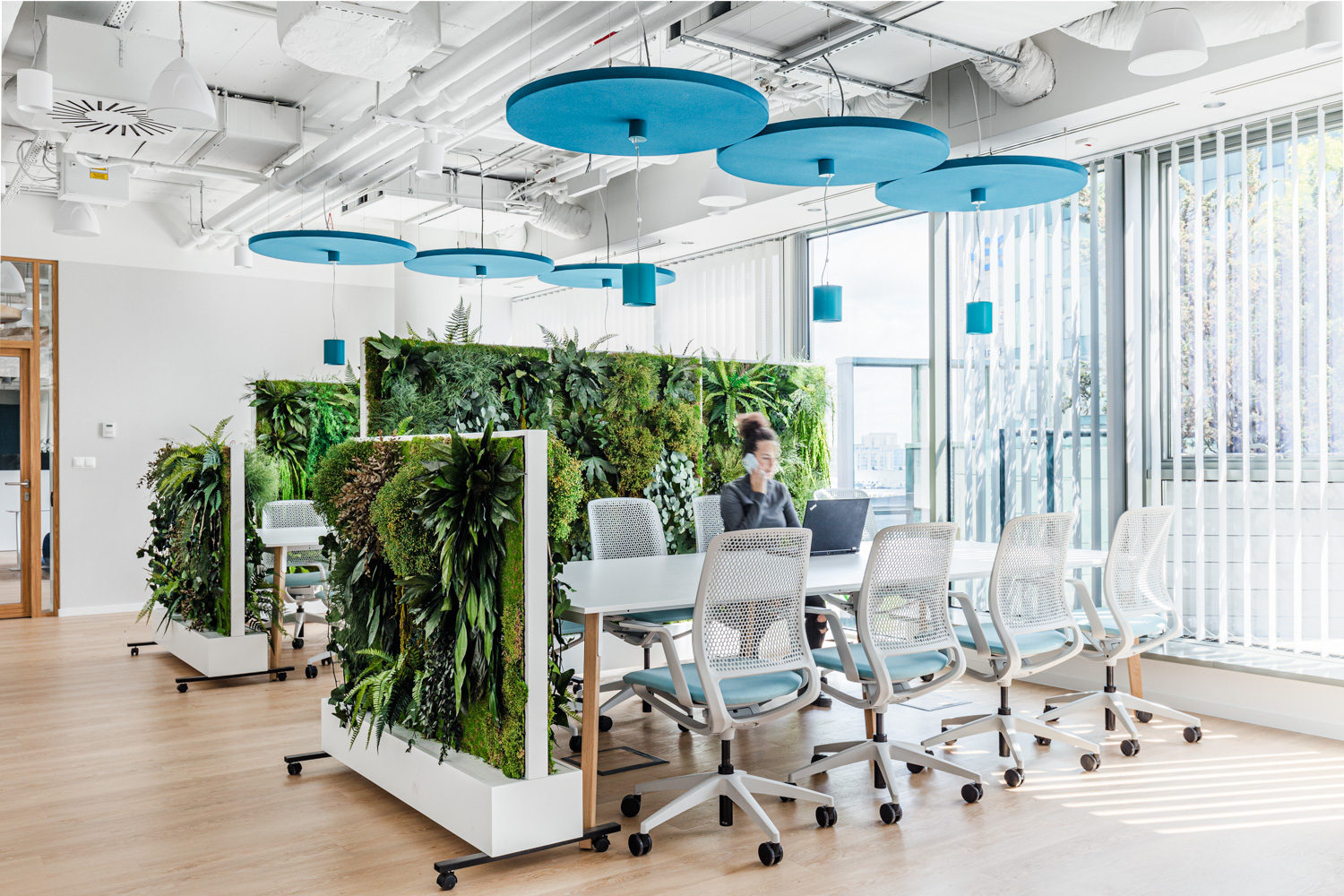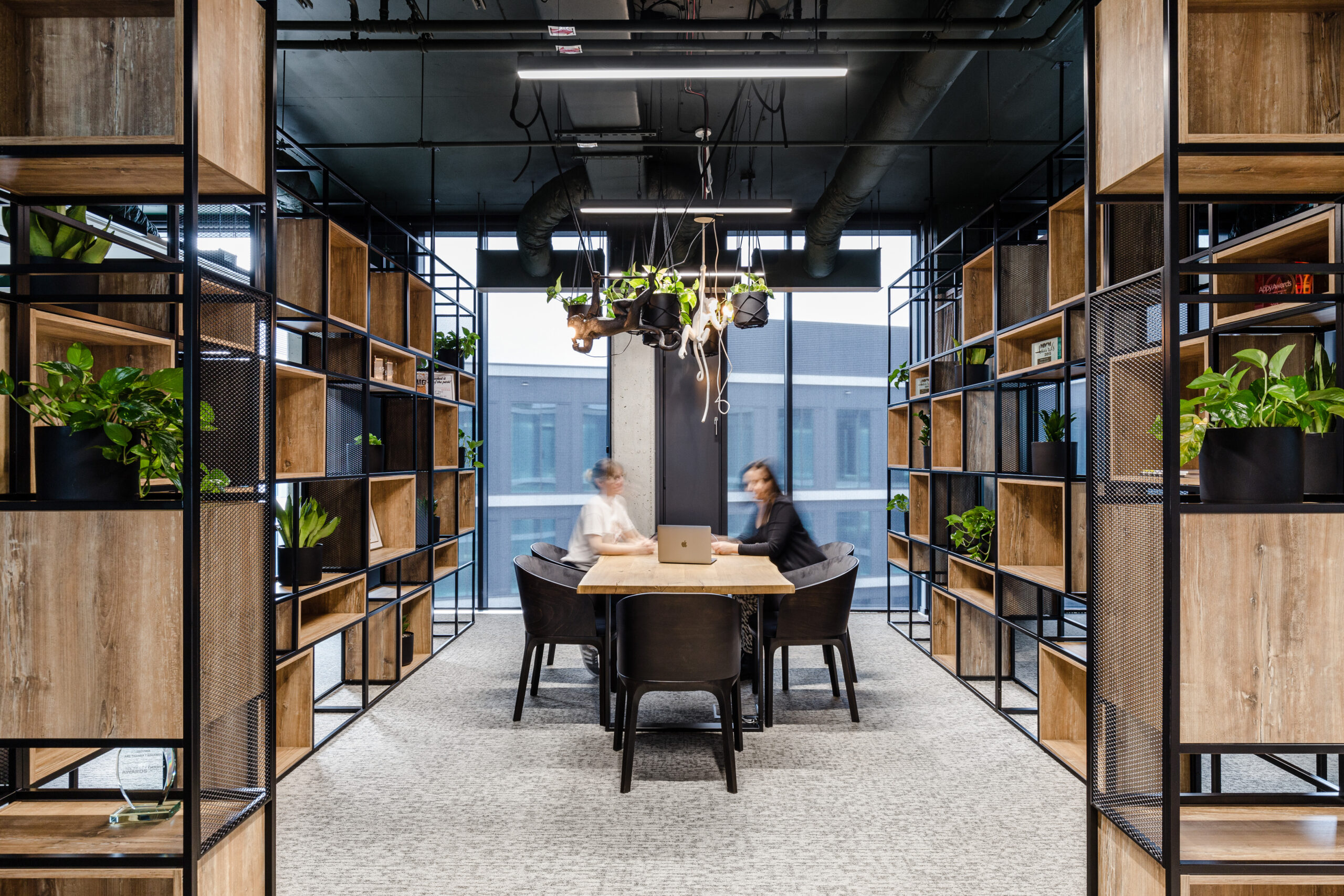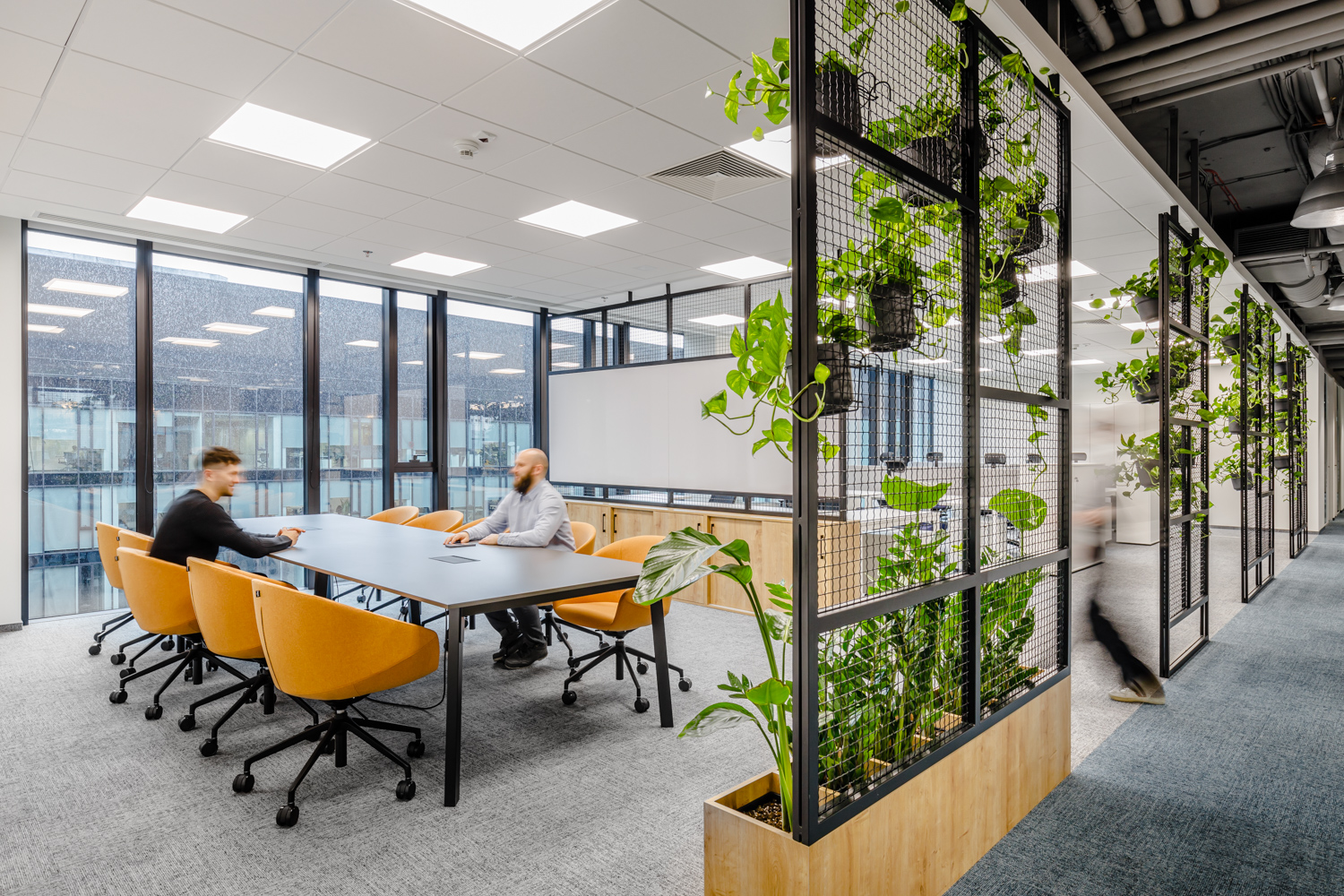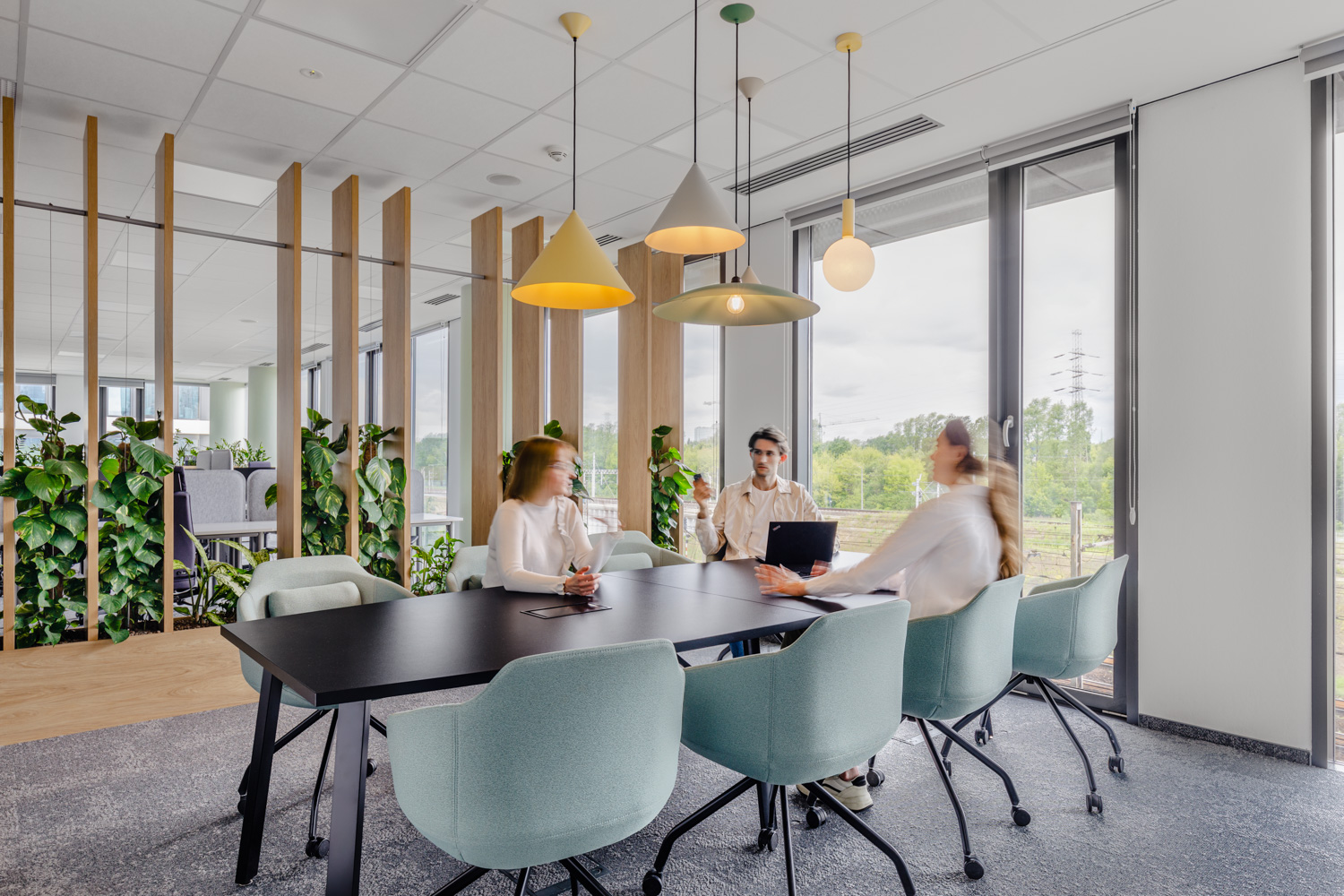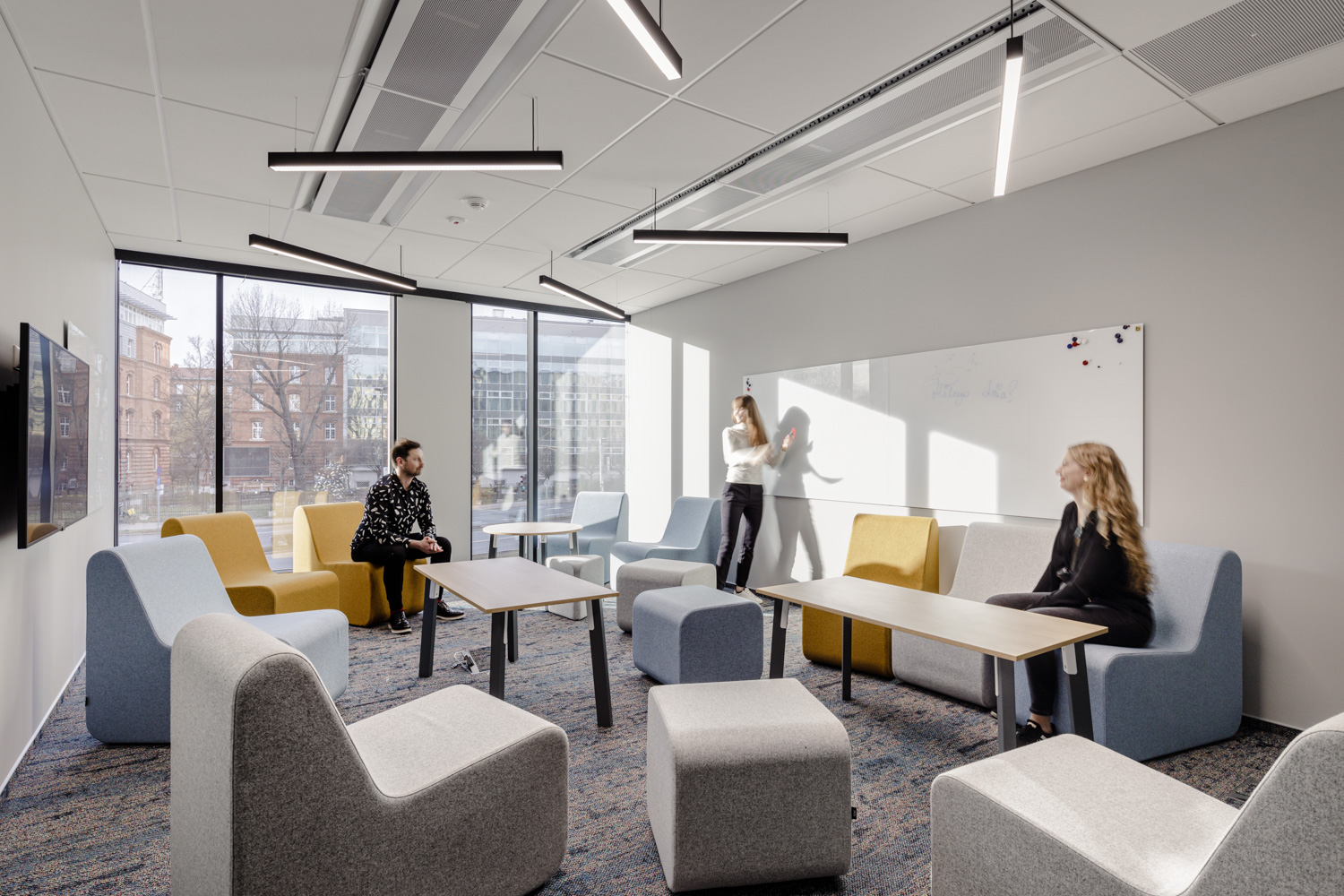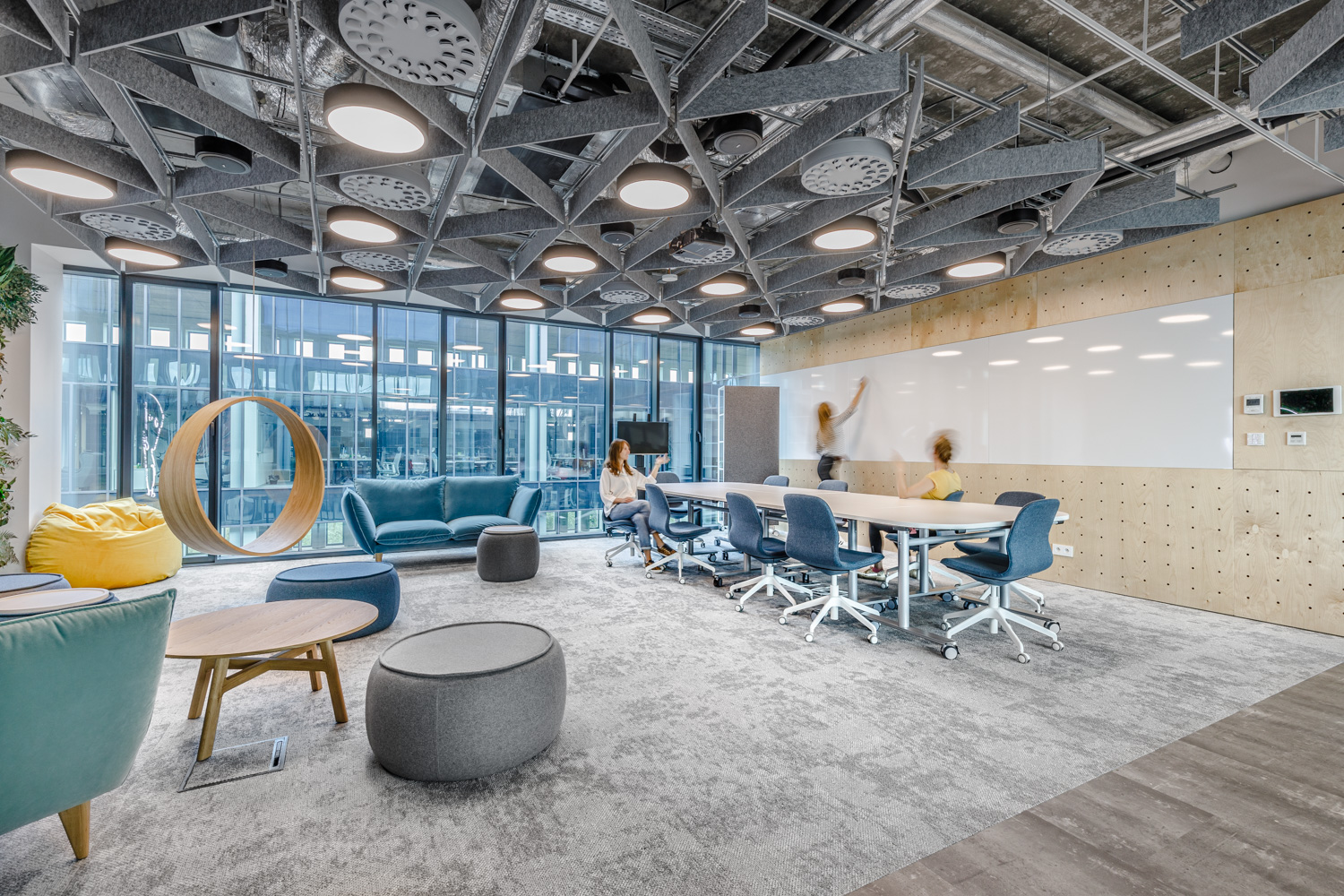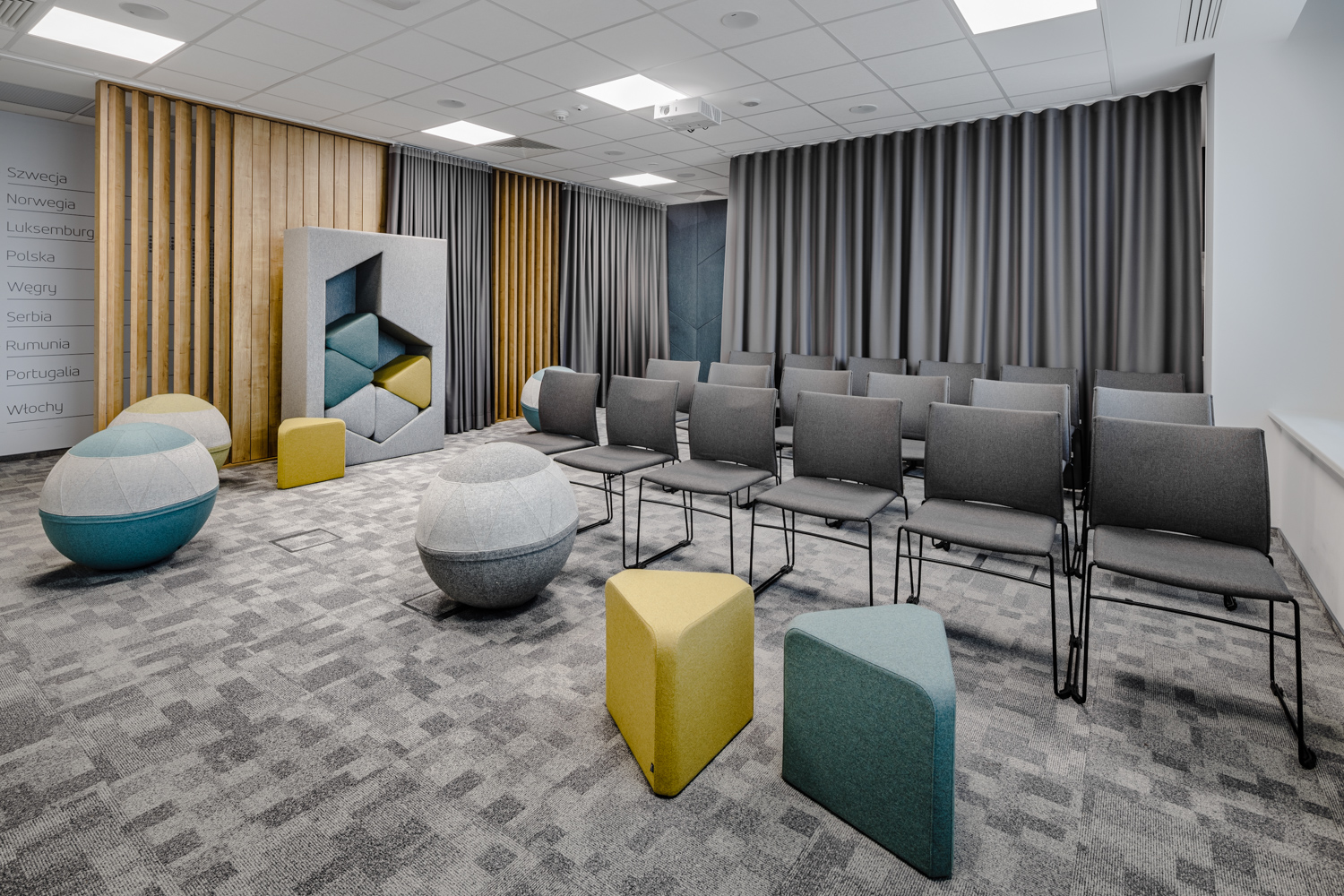How hybrid working has changed meeting spaces in offices?
The hybrid model of work has changed the way we use office spaces, with offices increasingly being treated as places for meetings and informal interaction. This change is stimulating an evolution of offices that is most clearly manifesting itself in several key types of space.
According to Colliers Define’s Hybrid and Beyond ’23 study, as many as 9 out of 10 organisations have implemented a hybrid model of work, and almost half of the employees in these organisations appear in the office no more than once a week. According to executives, however, the team dispersion associated with hybrid working is having a negative impact on some aspects of organisational performance. Indeed, a total of 70% of companies surveyed felt that remote working had a negative impact on maintaining a sense of being part of the team among employees, and 52% felt that remote working had a negative impact on the flow of information within and between teams.
As a consequence of these challenges, there are various actions that companies are taking to reduce the negative effects of employee dispersal. These measures include adapting working models, implementing initiatives to encourage employees to come to the office more often (e.g. organising regular meetings and office events), or rearranging office space to facilitate interaction and encourage informal networking. As a result, some types of office spaces, although present in offices for a long time, are now undergoing a transformation to adapt to changing needs.
Meeting rooms
The issue of providing an adequate number of meeting rooms, and adapting their size to the specifics of the meetings taking place in the office, has always been crucial, from the point of view of the effective functioning of the office. Research, carried out by Colliers before the pandemic, systematically indicated that no more than four people attended the majority of meetings held. The consequence of this fact was the provision of an adequate number of 4-person rooms in the offices.
However, once hybrid working became widespread, office meeting rooms began to be used differently. In offices adapted to the hybrid model, the most commonly used meeting rooms include small rooms and booths for 2 people, as well as larger rooms for 10-16 people. The popularity of the smaller rooms is due to the fact that 4-person meetings still take place, but are usually held in a hybrid format, with 1-2 people connecting remotely. The popularity of the larger rooms, on the other hand, is due to the model of work, adopted by many teams, which involves at least one team day a week when the entire team shows up at the office to meet and talk. Therefore, employees are now – much more often than before the pandemic – reporting a need for larger meeting rooms where such a team meeting can be effectively conducted.
Welcome areas
In most offices you will find a reception area of some sort. Today, however, small office receptions are increasingly being transformed into attractive welcome areas. In addition to their representative function, they are often the heart of office activity, making it possible to organise ad-hoc meetings or providing employees with additional space for informal conversations and interactions over coffee. These areas therefore often feature small coffee points, as well as soft furnishings and low tables at which to sit and chat. Increasingly, these types of zones also include co-working spaces where visitors or employees can sit and work.
Examples of welcome areas in Colliers Define projects:
Canteens
Compared to last year’s Hybrid and Beyond survey, the percentage of organisations that hold regular meetings and team sessions has increased from 46% to 64%. A frequent venue for such meetings and events is the office canteen. In offices adapted to the hybrid model of work, canteens are no longer small, rooms located in the poorly-lit part of the building. Instead, they are increasingly designed as attractive and multifunctional areas. These areas, although on a day-to-day basis function as regular canteens and places for informal meetings, can also be opened up – for example by using foldable walls – and used for an event or corporate celebration.
Examples of canteens in Colliers Define projects:
Project tables
Project tables, located in an open or semi-open areas adjacent to workstations, provided a kind of variety to monotonous open spaces before the pandemic and were most often used for ad-hoc meetings. In the age of hybrid working, however, these spaces serve a broader scope of functions. This is primarily due to the fact that hybrid working is often also accompanied by desk-sharing: a solution which has been implemented (or is currently being implemented) in 67% of the organisations surveyed. When the number of workstations is smaller than the number of employees, it is necessary to provide buffer spaces: additional, alternative workstations that can be used when office attendance exceeds the number of desks. Project tables, in addition to acting as ad-hoc meeting spaces, work very well as such a buffer. They also provide a convenient solution for employees whose work consists mainly of meetings and who only use their desk as a place to leave their belongings.
Examples of project tables in Colliers Define projects:
Workshop areas and multifunctional zones
Research regularly conducted by Colliers Define as part of workplace advisory projects shows that employees are more likely to come to the office if they are planning on having workshops, or other work that involves a group of people. Such workshop meetings are increasingly being organised not in standard meeting rooms, but in zones specifically designed for this purpose. The essence of such zones is that they can be reconfigured and adapted to the needs and specifics of the meeting. Holding a lively discussion, a brainstorming session or a workshop can be much easier in a more informal space. Key to designing this type of zone is therefore the provision of appropriate equipment – both in terms of AV technology and in terms of furniture, that can be easily rearranged. After all, the essence of this type of space is its multifunctionality.
Examples of workshop areas in Colliers Define projects:
The evolution of office spaces is influenced by many factors, and the solutions emerging in offices are often the result of current fashion. However, the changes described in this text are not the result of a momentary trend, they are rooted in profound changes concerning the way offices are used, in an era of widespread hybrid working. Therefore, when planning your office space, it is worth focusing on the key objectives and needs that your work environment will serve. In this way, you can create a space worth coming to.


